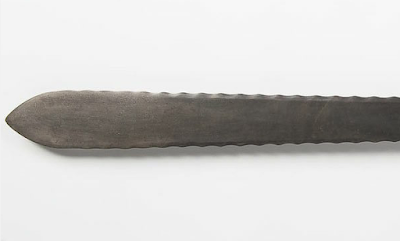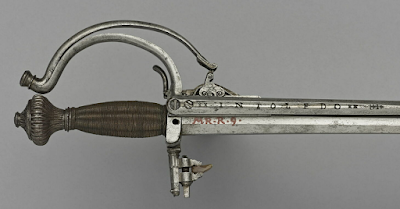At the beginning of this year Nick Thomas of the Academy of Historical Fencing published an interesting post in the Military & Classical Sabre group (FB) about the static flexibility of several antique swords.
„Blade flexibility –
Here I have taken a selection of my antiques to look at how flexibility varies between the different types of sword and pattern. This was mainly in response to the ever present “spadroons are too flexible to thrust” sentiment, which I knew to be untrue (or only true for some examples, rather than all).
These swords are arranged in order of their flexibility with the most flexible being the 1796 spadroon with folding guard being the most flexible, and the blue and hilt 1803 sabre being the most rigid. I suspect there will be quite some surprises in this data. This data shows what the overly flexible spadroons were like, but also what range they can be found in, with many good examples to be found. I’m sure it will also be quite a surprise to many to see just how flexible 1796 heavy cavalry swords can be. At the most flexible end of these swords, I can flex the blades almost into a half crescent, whilst at the other end of the scale the blue and gilt 1803 is so rigid is can barely flex at all. [1]
This is not a scientific measurement, but it does provide a very accurate comparison from one sword to another. For comparisons sake, a Black Fencer steel 1796 infantry sabre is 5kg and a Kvetun Easton straight blade 4.2kg. The measurements are as below.
1796 infantry officers sword (spadroon) – 2.3kg
1786 infantry officers sword (spadroon) – 2.7kg
1796 NCO sword (spadroon) .................. – 2.8kg
Lenticular bladed smallsword ................ – 2.8kg
1796 Heavy Cavalry Sword ................... – 2.8kg
Smallsword ............................................. – 3.2kg
Heavy Cavalry dress/dismounted ......... – 3.2kg
1803 Infantry Sabre ............................... – 3.3kg
1796 Heavy Cavalry Sword ................... – 3.4kg
1796 Infantry officers sword ................. – 3.5kg
1845 Infantry Officers sabre ................. – 3.6kg
1803 Infantry officer sabre ................... – 3.7kg
1796 Infantry officer sword .................. – 3.9kg
1796 NCO Sword (spadroon) ................ – 4kg
Colichemarde Smallsword .................... – 4.7kg
1796 Light Cavalry Officer sabre ......... – 5.2kg
1803 Infantry Sabre ............................... – 7kg”
The above values are extremely low in comparison with the static flexibility of an Olympic sabre (2.0-2.5kg). The author made a mistake to record the value when a blade just started to flex a little bit, thus seriously underestimating the static flexibility of his swords.
____________________________________________________
- These measurements were calculated using the Black Fencer system outlined on their homepage.



















